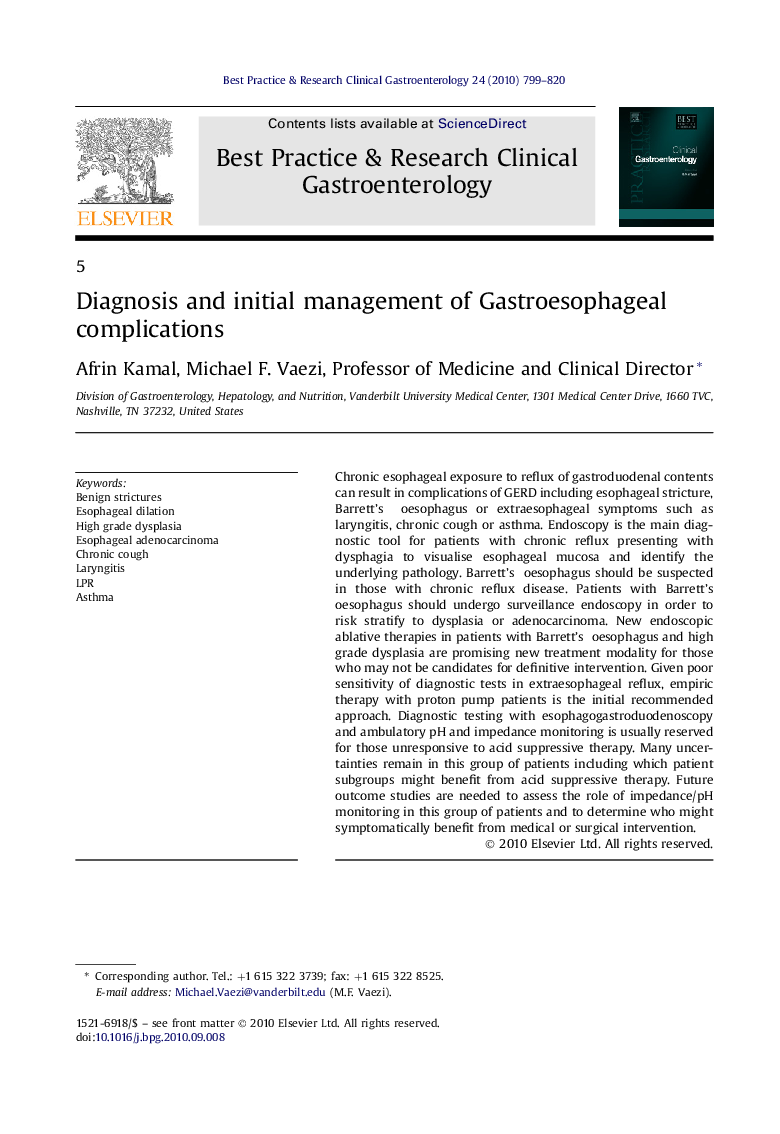| Article ID | Journal | Published Year | Pages | File Type |
|---|---|---|---|---|
| 3254375 | Best Practice & Research Clinical Gastroenterology | 2010 | 22 Pages |
Chronic esophageal exposure to reflux of gastroduodenal contents can result in complications of GERD including esophageal stricture, Barrett’s oesophagus or extraesophageal symptoms such as laryngitis, chronic cough or asthma. Endoscopy is the main diagnostic tool for patients with chronic reflux presenting with dysphagia to visualise esophageal mucosa and identify the underlying pathology. Barrett’s oesophagus should be suspected in those with chronic reflux disease. Patients with Barrett’s oesophagus should undergo surveillance endoscopy in order to risk stratify to dysplasia or adenocarcinoma. New endoscopic ablative therapies in patients with Barrett’s oesophagus and high grade dysplasia are promising new treatment modality for those who may not be candidates for definitive intervention. Given poor sensitivity of diagnostic tests in extraesophageal reflux, empiric therapy with proton pump patients is the initial recommended approach. Diagnostic testing with esophagogastroduodenoscopy and ambulatory pH and impedance monitoring is usually reserved for those unresponsive to acid suppressive therapy. Many uncertainties remain in this group of patients including which patient subgroups might benefit from acid suppressive therapy. Future outcome studies are needed to assess the role of impedance/pH monitoring in this group of patients and to determine who might symptomatically benefit from medical or surgical intervention.
